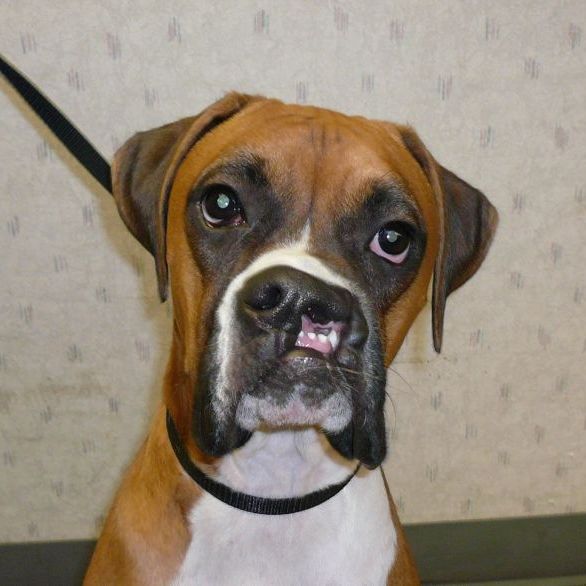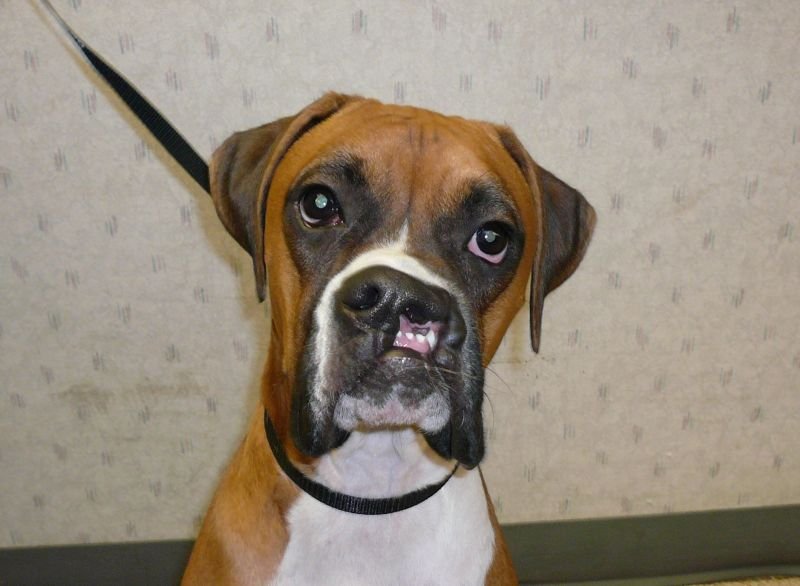
Navigating the complexities of pet health can often lead to unexpected challenges, one of which could be addressing a cleft palate in dogs.
This condition, while not widely discussed, can carry significant implications for your furry friend’s health and your finances.
But before delving into the intricacies of treatment and costs, it’s essential to lay a foundation of understanding: What exactly is a cleft palate? How does it develop, and what signs should alert dog owners to this condition?
Stay with us as we delve deeper into this topic, offering a comprehensive view that balances medical insight with practical financial considerations.
This article is crafted to keep you informed and prepared, ensuring you can provide the best care for your dog without facing unforeseen financial strain.
Contents
Understanding Cleft Palate in Dogs
Cleft palate in dogs is a condition that deserves attention and understanding, especially for pet owners who are committed to the health and well-being of their canine companions. This section aims to demystify the condition, emphasizing its significance and the necessity of timely medical intervention.
What is a Cleft Palate?
A cleft palate is a congenital deformity that occurs when the two plates of the skull that form the hard palate (roof of the mouth) are not completely joined together. This results in an opening between the mouth and the nasal cavity.
It’s a condition that can affect dogs of any breed, though some are more predisposed than others. Understanding this condition is the first step in recognizing its potential impact on a dog’s life.
Causes and Symptoms
The exact cause of a cleft palate in dogs is often difficult to pinpoint. It can be a result of genetic inheritance, environmental factors affecting the mother during pregnancy, or a combination of both.
Symptoms are usually noticeable early in a puppy’s life. They include difficulty nursing, nasal discharge, frequent sneezing, and in some cases, food or milk coming out of the nose.
Early detection is critical, as puppies with untreated cleft palates may struggle to gain weight and can suffer from chronic respiratory infections or even aspiration pneumonia.
The Importance of Cleft Palate Surgery
Cleft palate surgery is not just a cosmetic procedure; it’s a necessary intervention for the health and quality of life of the affected dog.
Without this surgery, a dog with a cleft palate faces ongoing health challenges and a diminished quality of life. The surgery’s aim is to close the opening in the palate, thus separating the nasal and oral cavities.
Health Risks Without Surgery
If left untreated, a cleft palate can lead to various health complications.
Chronic respiratory infections, malnutrition, and aspiration pneumonia are common in dogs who cannot effectively eat or drink due to the condition.
Additionally, these dogs often struggle with recurring nasal discharge and difficulty breathing.
Benefits of Surgical Intervention
Surgical intervention for a cleft palate can significantly improve the quality of life for affected dogs.
Post-surgery, dogs typically experience fewer respiratory infections, can eat and drink normally, and are less prone to aspiration pneumonia.
Moreover, the surgery can enhance the overall health, allowing the dog to lead a more normal and active life. It’s a crucial step in ensuring that the dog can thrive without the constant challenges posed by an untreated cleft palate.

Cost of Cleft Palate Surgery for Dogs
When considering cleft palate surgery for dogs, understanding the costs involved is crucial. These costs vary widely across the United States, reflecting differences in veterinary practices, regional cost of living, and the complexity of each individual case.
Here, we break down the expenses into three main phases: Preoperative care, the surgical procedure itself, and postoperative care and recovery.
Preoperative Care and Requirements
Before surgery can be considered, an initial consultation is required, typically ranging from $50 to $100. This is where your veterinarian will assess your dog’s condition and discuss potential treatment options.
Following this, diagnostic imaging such as X-rays or CT scans, which cost between $200 and $400, are essential to plan the surgery accurately. These images give the veterinary surgeon a detailed view of the cleft and help in determining the best surgical approach.
Blood work, costing around $70 to $150, is another critical preoperative requirement. This step ensures that your dog is fit for surgery and anesthesia. Speaking of anesthesia, an evaluation, usually priced between $50 and $100, is necessary to decide the safest anesthetic protocol for your dog.
The Surgical Procedure Explained
The surgery phase encompasses the cost of anesthesia ($100 to $300), the cleft palate repair surgery itself ($600 to $1,500), and the use of the operating room ($300 to $600).
In the U.S., the variability in these costs can be attributed to factors such as the surgery’s complexity, the duration of the procedure, and the specific techniques employed by the surgeon.
For instance, a more intricate surgery requiring advanced equipment and longer operating room time will naturally be more expensive.
Postoperative Care and Recovery
Postoperative care is vital for a successful recovery and includes overnight hospitalization, which costs about $100 to $200 per night.
This stay is crucial for monitoring the dog’s recovery immediately after surgery. Postoperative medications for pain relief and infection prevention can range from $30 to $100, depending on the medication type and duration required.
Follow-up consultations, necessary for monitoring the dog’s recovery and healing process, are generally priced at $50 to $100 per visit. If additional imaging is needed post-surgery, this can add another $100 to $300 to the total cost.
In sum, the total estimated cost for cleft palate surgery for dogs in the U.S. can range from $1,550 to $3,750 or more.
This broad range accounts for the various factors that can influence the overall cost, including geographic location, the veterinary clinic’s pricing, and any complications or additional care required.
As a pet owner, it’s important to discuss all these aspects with your veterinarian to get a more accurate estimate tailored to your dog’s specific needs.
| Phase | Service | Price in US$ |
|---|---|---|
| Pre-Surgical | Initial Consultation | $50 – $100 |
| Pre-Surgical | Diagnostic Imaging (X-rays, CT scan) | $200 – $400 |
| Pre-Surgical | Blood Work | $70 – $150 |
| Pre-Surgical | Anesthesia Evaluation | $50 – $100 |
| Surgery | Anesthesia | $100 – $300 |
| Surgery | Cleft Palate Repair Surgery | $600 – $1,500 |
| Surgery | Operating Room Use | $300 – $600 |
| Post-Surgical | Overnight Hospitalization | $100 – $200 per night |
| Post-Surgical | Postoperative Medications (Pain relief, antibiotics) | $30 – $100 |
| Post-Surgical | Follow-Up Consultations | $50 – $100 per visit |
| Post-Surgical | Additional Imaging (if necessary) | $100 – $300 |
| Total Estimated Cost | $1,550 – $3,750+ | |
Cost Factors of Cleft Palate Surgery
The cost of cleft palate surgery for dogs is influenced by several key factors. Understanding these can help pet owners better prepare for the financial aspects of this crucial medical procedure.
Geographical Variations in Pricing
One of the most significant factors affecting the cost of cleft palate surgery is geographical location. In the United States, veterinary costs tend to vary widely from one region to another.
For instance, veterinary services in urban areas like New York City or Los Angeles are typically more expensive compared to those in rural areas. This variation often reflects the overall cost of living and the operational costs associated with running a veterinary clinic in different locations.
The Role of Veterinary Experience and Equipment
The expertise of the veterinary surgeon and the quality of the medical equipment used are also crucial factors.
Surgeons with extensive experience in performing cleft palate surgeries, particularly those who specialize in oral and maxillofacial surgery, might charge more due to their specialized skills.
Similarly, clinics equipped with advanced diagnostic and surgical equipment may offer more precise and effective treatments but at a higher cost.
For example, a veterinary clinic in San Francisco with state-of-the-art surgical facilities might charge more than a clinic in a smaller town with more basic equipment.
Additional Medical Expenses
Additional medical expenses can also impact the overall cost. These may include preoperative blood work, postoperative medications, and any special care or unforeseen treatments required, particularly if complications arise.
It’s important for pet owners to consider these potential additional costs when budgeting for their dog’s surgery. In some cases, these expenses can add several hundred dollars to the final bill.
Financing Cleft Palate Surgery
Insurance and Coverage Options
Navigating the financial aspect of cleft palate surgery in dogs can be challenging, but there are options available to help manage the costs. Pet insurance is one such option. Many pet insurance plans offer coverage for surgical procedures, including those for congenital conditions like a cleft palate.
It’s important to thoroughly review the terms of the insurance policy, as coverage can vary. Some policies might cover a significant portion of the surgery cost, while others may have limitations or exclusions.
Payment Plans and Financial Assistance
For pet owners without insurance or whose policies do not cover the full cost, payment plans offered by veterinary clinics can be a viable alternative. These plans often allow the cost to be spread over several months, making it more manageable.
Additionally, there are various pet health financing options available, such as CareCredit, which is specifically designed for healthcare expenses, including veterinary care. Financial assistance programs and grants provided by animal welfare organizations can also be explored. These programs are often need-based and can provide significant relief in covering surgical expenses.
Resources and Support
Support Groups and Communities
Support groups and communities, both online and offline, can be invaluable resources for pet owners facing a cleft palate surgery for their dog.
These groups provide a platform to share experiences, offer advice, and give emotional support. Many pet owners find solace and practical tips in these communities, which can help navigate the pre- and post-surgery phases.
Additional Resources for Pet Owners
There are also various additional resources available for pet owners. Veterinary hospitals and clinics often provide educational materials on pet health and specific conditions like cleft palate. Websites dedicated to pet health, veterinary care forums, and pet care blogs are also excellent sources of information and support.

Conclusion
Cleft palate surgery in dogs is a significant medical procedure, both in terms of its impact on your pet’s health and the financial commitment it entails.
Understanding the various aspects, from the initial diagnosis to the postoperative care, is crucial for making informed decisions.
We hope this article has provided comprehensive insights into what to expect, including the costs and available financial support options.
If you have personal experiences, additional tips, or questions regarding cleft palate surgery for dogs, please feel free to share them in the comments section.
